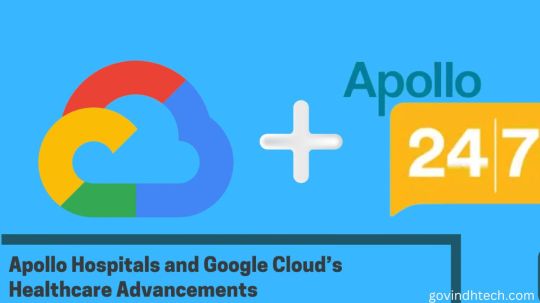#vms
Text
Vendor Mangement Solution

3 notes
·
View notes
Text
Eric and Jen so far are just an alternate reality version of Dash and Lily
6 notes
·
View notes
Text
I've been thinking about it lately so I wanted to blog about how Vogon handles requests.
If you have no interest in web frameworks feel free to skip this one.
Vogon as a core framework is basically nothing. It's a few functions, some starter classes, and a codified file structure. The main idea was for it to be hugely flexible without getting in the way of whatever project it was applied to.
This means that it has no static routes. By design there are no specific php URIs built into the code. And I don't mean that in the WordPress way where there are no static routes, except for the login url (and some other items). There are no static routes. If the framework is used as intended, the only PHP file your request is routed to is the main index.php file of the vogon folder structure.
What that means is that when you enter a url for a vogon instance you'll enter in something like this:
localhost/vogon/ebooks/view/53066?file=/upload/ebooks/user/hack2e_03.book/hack2e_03.book - user.pdf
If you know your URL structure we can go ahead and break this request down a little
[protocol] - http:// (implied because no protocol is specified)
[hostname] - localhost (this is an alias for the local ip which is usually 127.0.0.1, or you are requesting something running on your own computer)
[uri] - /vogon/ebooks/view/53066
[GET Variables] - ?file=/upload/ebooks/user/hack2e_03.book/hack2e_03.book - user.pdf
When vogon is installed, it analyzes the URI of the request that accessed the installer (though this is user overridable), this allows the framework to be aware of when it is in a subdirectory rather than an exclusive url. That is the case with this request, so we can break our URI into two sections:
[Vogon Root URI] - /vogon
[Vogon Route] - /ebooks/view/53066
Before we break things down further we should talk about what's happening in the framework itself. The protocol, hostname, and Vogon Root URI tell the web server to send a request to Vogon application. The web server is then configured to route that request to the index.php file inside the web root. The exception for this is direct access to static files. This enables us to load static assets like JavaScript or CSS files. It does also mean that standalone PHP files can be accessed, but Vogon controller model and view files are all dependant on being loaded through their helper functions and will only error, if anything at all, if loaded directly. An optional security file can be prepended to ensure no unauthorized php execution occurs, but that involves some intensive configuration by the user, and sometimes results in false positives.
Getting back on topic. The request is routed to the index.php file. The index then looks for a new install flag file in the main directory. If this file exists then the install process has not been completed and the installer is loaded.
However, if that file does not exist, the system will load the bootstrap.php file from the /main/ directory, which is where 99% of the Vogon code lives.
The bootstrap loads any classes in the /main/class/autoload/ folder, establishes a database connection if one is configured, and loads our functions from the /main/functions.php file. If user sessions are enabled by the user extension, the bootstrap will attempt to establish an existing user session, if it can't a login screen is shown.
This login screen will be shown to any request, this is useful because unlike other systems with a static login route, you post your login to the same uri you requested originally, so no complicated redirects have to be done.
So far we haven't done any route parsing, and everything done by the system is the same for every request. But now we must calculate what other files need to be loaded, so we load /main/router.php
I think I'd actually like to move this to an extension so it's borders are a little better defined and it can be replaced/configured a little more easily (and so the system can include additional routers to choose from).
The media server version of Vogon is the most mature, so let's discuss that router.
In this router, the router only handles the first step of the process, the endpoint. In our example url that would be '/ebooks'. The router takes the endpoint it's been given and compares that against a database `routes` table. The routes table links controllers to endpoints. These controllers can live in the /main/controller/ folder or in a /main/ext/[ext-name]/controller/ folder. The system will attempt to load the defined controller, if no controller is found it will load the default 404 controller (404 is the http status code for "Not Found").
Then the controller is able to take over routing however it would like. This route is currently configured to use the /main/ext/ebooks extension, and loads controller.main.php from within that extension.
Vogon has a built in function called get_slug_part(); that allows parts of the URI to be accessed as if they were an array. The router uses slug[0] to determine the endpoint, so most controllers look first at slug[1] to determine what action to take. Remember, we are looking at this part of the URI /view/53066
The ebooks controller.main.php uses a switch case based on slug[1]. In this case slug[1] (view), tells the controller that we are viewing an ebook. The ebooks extension then loads controller.comic_book_reader.php.
controller.comic_book_reader.php gets slug[2], checks to ensure that it is numeric (and thus presumably a database ID), and then it attempts to look up that document by database ID. It compares the type of that document (if anything successfully comes back) against a subset of types it knows how to handle, and if it can it loads that document into a view and you are served what you requested.
In this particular instance, that view is the JS PDF library developed by Mozilla, that has been configured to read the filename of the PDF to load from the "file" GET variable.
That's it. That's a full request handled by Vogon. This is the point where output is actually returned to the user (if they have a user session).
Here's the full url again:
localhost/vogon/ebooks/view/53066?file=/upload/ebooks/user/hack2e_03.book/hack2e_03.book - user.pdf
And here's a flow of documents (this is not complete and does not include classes, inline includes, ect.):
/index.php -> /main/bootstrap.php -> /main/router.php -> /main/ext/ebooks/controller/controller.main.php -> /main/ext/ebooks/controller/controller.comic_book_reader.php -> /main/ext/ebooks/view/view.js_pdf_viewer.php
4 notes
·
View notes
Text
I would like people's thoughts on a particular matter.
I've made a personal rule, of not posting pictures of a craft or its process of said craft, I've chosen to make as a gift, until the recipient has received it. The issue is, is that by the time schedules and possible shipping times have lined up, I forget to post anything I've remembered to take photos of. Because of this, it adds to the lack of activity on updating my pages. So, to increase activity, I want to post my projects (especially the gifts) without any specifics on who they'll go to, until the individual has opened their gifts.
Should I do this new idea? Or should I continue as I have been?
#vms#velveteenmousestudios#velveteen mouse studios#may i asqueak you a question#esqueak me#possible changes coming soon
2 notes
·
View notes
Text







Congrats! You look so beautiful 🤍🖤
#måneskin#damiano david#ethan torchio#vic de angelis#thomas raggi#ethaneskin#mtv video music awards#vms#video#iwbys
2 notes
·
View notes
Text
Proxmox 8.2 New Features and Download
Proxmox 8.2 New Features and Download #proxmox #proxmox82 #proxmox82newfeatures #downloadproxmox #proxmox82download #virtualization #vhtforums #opensourcevirtualization #kvmvirtualization #virtualmachines #lxccontainers #selfhosted #selfhosting
Proxmox has a lot of momentum behind it as of recently. We had the recent news of the new Proxmox import wizard to import VMware ESXi guests in Proxmox virtual environment. Also, Proxmox 8.1 wasn’t released that long ago. However, Proxmox has now released Proxmox 8.2 new features and you can now download the ISO for installation. Let’s take a look at the new features contained in this…

View On WordPress
0 notes
Text
How Can a Vendor Management System Revolutionize Your Business Operations?
Are you struggling to streamline your vendor interactions efficiently? Discover the transformative power of a vendor management system (VMS). A VMS is a sophisticated software solution designed to enhance vendor relationship management, optimize procurement processes, and maximize cost savings.
Vendor management tools offer a comprehensive array of features to simplify vendor onboarding, performance evaluation, and contract management. By leveraging these tools, businesses can effectively track vendor performance metrics, ensure compliance with contractual agreements, and mitigate risks associated with vendor relationships.
One of the key functionalities of vendor management software is vendor invoice management. This feature automates the invoice approval process, reduces manual errors, and accelerates payment processing cycles. With advanced invoice tracking capabilities, businesses can gain better visibility into their financial commitments and optimize cash flow management.
Moreover, a robust vendor management platform facilitates seamless communication and collaboration between internal stakeholders and external vendors. Through centralized communication channels, businesses can streamline information sharing, resolve issues promptly, and foster stronger vendor partnerships.
By implementing a VMS, businesses can unlock a myriad of benefits, including improved operational efficiency, enhanced vendor performance, and reduced procurement costs. With access to real-time data and analytics, organizations can make informed decisions, drive strategic initiatives, and stay ahead of market trends.
Investing in TYASuite vendor management system is imperative for businesses looking to optimize their vendor relationships and drive sustainable growth. Are you ready to transform your vendor management processes and elevate your business to new heights?
#vendor management system#vendor management tools#vendor management software#vendor invoice management software#vms#vendor invoice management#vendor management platform
0 notes
Text


lujipeka dans son clip homemade de “make love wearing a fila jacket”. (2013?)
#lujipeka#columbine#vms#kciv#soundcloud#2013#archive#sadboys#notre yung lean français#old web#aesthetic#vaporwave
1 note
·
View note
Text
https://www.photonplay.com/blog/harnessing-the-power-of-variable-message-sign-boards
HARNESSING THE POWER OF VARIABLE MESSAGE SIGN BOARDS
Whether it’s advertising a product, informing the public of important news, or simply getting a message across, effective communication is essential. One powerful tool that has gained popularity in recent years is the variable message sign board (VMS). These digital signs are versatile and customizable and can convey a wide range of messages to diverse audiences.

0 notes
Text
Apollo Hospitals at Google Cloud microservices zero-downtime

Zero downtime migration of a complex micro services application to Google Cloud for Apollo Hospitals
Achieving zero downtime migration of a complex micro services application to Google Cloud for Apollo Hospitals, a healthcare company based in Chennai, India. One of India’s largest multidisciplinary healthcare systems, it offers online doctor consultations, home diagnostic tests, and online pharmacy to make healthcare affordable and accessible.
This blog describes how it migrated a critical 24×7 national application with 97 services and 40+ SQL databases to Google Cloud with zero downtime.
Growing faster with better performance, security, and reliability
COVID-19 presented new growth challenges for Apollo Hospitals, which was founded before the pandemic. Google needed rapid development in functional and non-functional areas to meet demand. Apollo 24|7 deploys VMs and containers. The application integrates SQL and NoSQL databases, Redis, VMs, Kubernetes, load balancers, WAF, and third-party public endpoints.
After the pandemic, google engineering leadership saw an opportunity to improve platform performance, security, and reliability to continue growth. Modern automation and Infrastructure as Code (IaC) interventions would improve robustness and scale. To provide affordable healthcare to the masses, cost efficiency was prioritized. her app has millions of active users, so needed to avoid downtime to maintain user experience.
They collaborated with award-winning Google Cloud partner Searce to implement to needs smoothly. Apollo Hospitals, Searce, and Google Cloud teams collaborated on development, testing, deployment, and monitoring, which helped the migration project succeed.
Search supported google teams throughout the project with expertise and support.
Full-stack migration without downtime
The goal was to migrate the entire app to Google Cloud without downtime. The QA, pre-production, and production environments were included.
Google process is outlined below:
DORA survey, then CAST assessment.
Developed migration waves, dependency graphs, and vulnerable library fixes
Created a Google Cloud enterprise landing zone and enabled posture management security controls.
Virtual machines, GKE cluster, Cloud SQL, and Redis instances
Built CI/CD pipelines for all services
Deployed Google Cloud services and dependencies
The Google Cloud Marketplace allows ISV services.
Connect source DBs to Cloud SQL for change data capture (CDC).
Split traffic between services to Google Cloud before the final cutover.
CI/CD pipelines, Terraform scripts, and other resources were used to deploy the QA environment on Google Cloud.
Google next environment was a pre-production replica of the production environment with lower capacity due to low traffic. Simulating a production migration helped us write the right SOPs for each application service. Then also defined service dependencies, split traffic between the old locations and Google Cloud, and tested the functionality end-to-end by sending 1-10% of service traffic to Google Cloud. They installed CDC for databases between source and target on Google Cloud and migrated all traffic to Google Cloud to complete the cutover migration.
They used many pre-production lessons during production migration. On migration day, Identity and Access Management (IAM) issues in a few services integrated with third-party services like payments caused some issues. During partial deployment on GKE, service pods communicated with source location DBs via internet and/or VPN tunnel. Therefore, bandwidth monitoring and NAT gateway port allocation had to be closely monitored to avoid packet drops. Traffic splitting allowed us to divert all traffic from Google Cloud if issues arose. This enabled a zero-downtime application migration.
This migration’s main achievements:
Migration of 97 services across three GKE clusters with gateway and ingress controllers
Used 22 Redis instances, Cloud Functions, Pub/Sub, Kafka.
Took static content to Cloud CDN
Cloud Armor WAF/DDoS, Security Command Center Premium
Select Marketplace services like MongoDB and Aiven Managed Kafka
Split production traffic between the old location and Google Cloud for zero downtime.
Migration of 40+ MySQL and PostgreSQL databases to CloudSQL using CDC
Transferred 2+ TB to Google Cloud.
Reduced operational costs and increased agility and security
Apollo 24|7 successfully migrated through applications to Google Cloud, improving GKE and Cloud SQL performance and latency. Moving away from monolithic code improved architectural tenets and reduced costs by using committed use discounts (CUD) pricing and Google Cloud’s per-second billing, on-demand resources, and custom-sized VMs.
They improved agility and performance by using Terraform to deploy services efficiently with fewer errors using Infrastructure as Code (IaC). The deployment found IAM policy gaps, improving security. Google’s security principles guided thorough cleanup with this project.
Path forward
Apollo Hospitals is also expanding its AI-powered solution partnership beyond the Clinical Decision Support System (CDSS) built with Google Cloud Consulting AI teams. They are introducing Med-PaLM 2 generative AI models for Ask Apollo and beyond.
Google and Apollo Hospitals will continue to transform Indian healthcare. Google Cloud has proven valuable in Apollo 24|7’s core applications, and they want to use it in marketing, supply chain, and customer service.
Read more on Govindhtech.com
0 notes
Text
Installation von Shinobi unter Linux: Inklusive IP-Kameras (Tutorial)
In diesem Beitrag installieren wir die Video-Management-Software (VMS) Shinobi auf einem Hostsystem mit Linux Ubuntu 22.04 oder alternativ mit Debian 11. Shinobi ist eine beliebte selbst gehostete Open-Source-Software für Überwachungs- und Sicherheitssysteme...[Weiterlesen]
0 notes
Text
Hyper-V VM's Won't Start After October 2023 Windows Updates
Hyper-V VM's Won't Start After October 2023 Windows Updates #hyperv #microsoft #patchtuesday #vms #blogencounters
Issue
After installation of Windows Updates (Oct 2023) stand-alone, random Hyper-V VM’s fail to start with error:
Synthetic SCSI Controller (ID): failed to power on with error ‘incorrect function’
Attachment <filename.vhdx> failed to open because of error ‘incorrect function’
Note: Windows Server 2019 and 2022 running Hyper-V seem to be the primarily affected HOST server O/S.
Possible…

View On WordPress
0 notes
Text
Awebstar's Visitor Management System for Smart, Secure, and Seamless Meet!
Managing visitors efficiently is crucial for any organization's security. Awebstar's Visitor Management System is a game-changer! With seamless check-ins and visitor badge printing, it simplifies the entire process. Real-time notifications alert hosts when their guests arrive, enhancing your front desk's productivity.
Awebstar's VMS also offers detailed visitor logs for better record-keeping and compliance. The customizable features allow you to tailor the system to your unique needs. Say goodbye to paper logbooks and embrace the future of visitor management with Awebstar. It's not just convenient; it's secure and smart.

1 note
·
View note
Text


i love you undertale
#EVERYONE SAY HAPPY BIRTHDAY UNDERTALE NOW. AGAIN.#id in alt#undertale#flowey#asriel dreemurr#vm's art#i forgot kid asriel doesnt have horns this is now fixed
12K notes
·
View notes
Text

FNQ Marine Electronics Logo
#electronics#marine electronics#Garmin#Raymarine#Lowrance#Simrad#Navionics#Furuno#JBL#JRC#GME#Fusion#B & G#Airmar#GPS#VHF and HF Radio#VMS#Chart plotters#Radar#Sonar#Sounders#Auto pilots#Multifunction Devices#AIS#Marine solar#Wind gererators#Satellite communications#NMEA#General DC wiring#We can repair to component level
0 notes